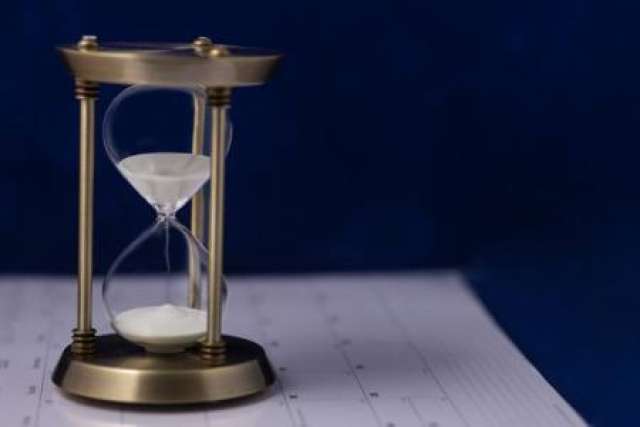If the past two years of the COVID-19 pandemic feel kind of blurry and you have a hard time remembering if something happened three weeks ago or three months ago, there’s good reason for that.
Many of us are experiencing a kind of pandemic time warp, with 2020 and 2021 blended together.
Blame the lack of traditional time markers such as holiday, birthday and anniversary celebrations, says Dean Buonomano, PhD, a professor of neurobiology and psychology at the David Geffen School of Medicine at UCLA, who studies how our brains make sense of time.
“What's happened to a lot of people is we've lost our temporal landmarks, our temporal buoys, if you will — the crumbs in the Hansel and Gretel path that people left — because throughout most of our lives we've had either vacations or trips or Thanksgiving or birthdays, and those serve as memory landmarks in our brains,” Dr. Buonomano says.
“But in 2020 and 2021, we didn’t have those landmarks. So you might get those years mixed up, and what year are we in? It’s a bit more confusing than normal.”

How the brain tells time
There are two ways to look at how we understand time, he says: retrospective and prospective.
Retrospective time refers to how we make sense of time that has passed, looking backward. Prospective time is about the mechanisms for processing time as we experience it, while it’s happening.
Retrospective timing is heavily dependent on memory, Dr. Buonomano explains, while prospective timing relies on the numerous “clocks” we have in our brains. We notice pauses in speech, for example, and can generally estimate what time of day it is.
“The brain has many clocks for these different scales,” Dr. Buonomano says. “The parts of your brain that tell time for speech or music don’t have an hour hand. And the circadian clock that tells time of day — time to go to bed, time to eat — that doesn’t have a second hand.”
These clocks work independently and simultaneously, so disruption of the circadian clock, from jetlag, for example, doesn’t directly interfere with our ability to speak or play music.
Synchronized time is a social construct
If human beings didn’t live in modern societies, we wouldn’t need more than these natural, internal clocks to tell time.
It’s unnatural to track weeks, months and years, Dr. Buonomano says.
“That’s something that no other animal other than humans really does,” he says. “Our brains didn’t evolve for this.”
All animals follow the change in the day. They know the difference between morning and night and winter and summer — maybe there are more predators at night and food is more plentiful in summer. But they don’t know how many summers have passed or whether it’s Thursday or Saturday. They don’t know their age.
"We already understood that time flies when you're having fun and a watched pot never boils, and this is an example of that."
Dr. dean buonomano
And for much of human history, people didn’t track how old they were, either. In some parts of the world, they still don’t.
“It’s useful to remember how unique we are in the fact that we even keep track of the years as they go by,” Dr. Buonomano says. “That’s really much more than just timers in our brain or our memory. That’s the ability to count, to symbolically represent the years and the months and the days.”
Humans’ technological advancements spawned a need to measure time, Dr. Buonomano says.
“We went through sundials to hourglasses to pendulums to quartz clocks and atomic clocks,” he says. “Our ability to tell time has very carefully tracked our technological development.”
Tracking months and years and marking time down to minutes and seconds are “a signature of modern society.” If we didn’t have clocks and calendars, we couldn’t make dinner reservations or take flights or book Air B&Bs or go to movies. Tracking hours and days is not about our survival as a species but our ability to synchronize activities.

Lost time during the pandemic
But without these activities — the Friday happy hour with colleagues, the weekend yoga class, the family birthday parties and anniversary dinners — our sense of retrospective time gets fuzzy. These markers distinguish days, months and years. The year we spent Christmas with grandma was not the same year we celebrated Christmas with a ski trip.
During the COVID-19 pandemic, however, when gyms and bars were closed (no happy hours or yoga classes) and there were fewer family gatherings (no Christmas with grandma or ski trips), our days and months blurred together.
“That blurring is, in part, a symptom of the lack of our normal memory landmarks that often have a pacing due to our yearly schedule,” Dr. Buonomano says. “Memories are absolutely key for our ‘sense of time.’”
While there’s no way to retroactively create memories that will help distinguish 2020 from 2021, the time-warp feeling that’s characterized the past two years will wane as we resume our pre-pandemic routines.
“We already understood that time flies when you’re having fun and a watched pot never boils, and this is an example of that,” Dr. Buonomano says. “Our pacing is off, but I don’t think there will be any long-term consequences of it. We’re very resilient creatures. And as we pick up little by little, we’ll go back into our grooves and reestablish those temporal landmarks.”
Learn more about how the Buonomano Lab at UCLA is studying how the brain processes time.



